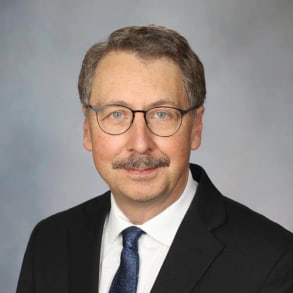Mayo Clinic’s Eugene L. Scharf, M.D. , Robert D. Brown Jr., M.D., M.P.H. and Harry Cloft, M.D., Ph.D. , discuss how the team at Mayo Clinic provides each patient individualized care to help maximize quality of life.
700,000 to 800,000 people in the United States have a stroke each year. Many people can lower their risk of stroke with medical risk factor modification.
When a stroke occurs, prompt treatment is crucial. Every minute counts and can reduce brain damage and other complications.
“Some patients who would have had a devastating stroke come out of the hospital with no deficient, no difficulties whatsoever,” says Robert D. Brown Jr., M.D., M.P.H.
There has never been a more exciting time to be in this field, to be honest with you. If a person has a stroke, the annual risk of stroke of recurrence is around anywhere between 1-5%. A stroke is either a lack of blood supply to the brain tissue, or there are also bleeding types of stroke, in which for whatever reason there is a spillage of blood into the brain tissue leading to a brain hemorrhage. About 7 to 800,000 people each year in the US have a stroke, many people can avert a surgery and a stroke with adequate use of medical risk factor modification, such as lipid lowering therapies, blood thinners and blood pressure control. Medical therapies have advanced in the last 20 years that have reduced the risk of subsequent stroke substantially. We can use innovation in imaging techniques to help to guide the patient regarding the optimal management and in stroke prevention. Another major recent advances that we are able to now uh quite successfully removed clots out of arteries that are causing an acute stroke. So patient will present to the emergency room with an onset of weakness or difficulty talking and the culture has really changed to get these patients to us quickly and then we can get them into r angiography suite and do what we call the thrown back to me that some patients who would have had a devastating stroke come out of the hospital with no deficit, no difficulties whatsoever. We look at the whole patient and look at every single thing that could possibly happen and then discuss what is in the patient's best interest in terms of how to maximize quality of life and disability free life, which is ultimately what we're here for.
Related Presenters


